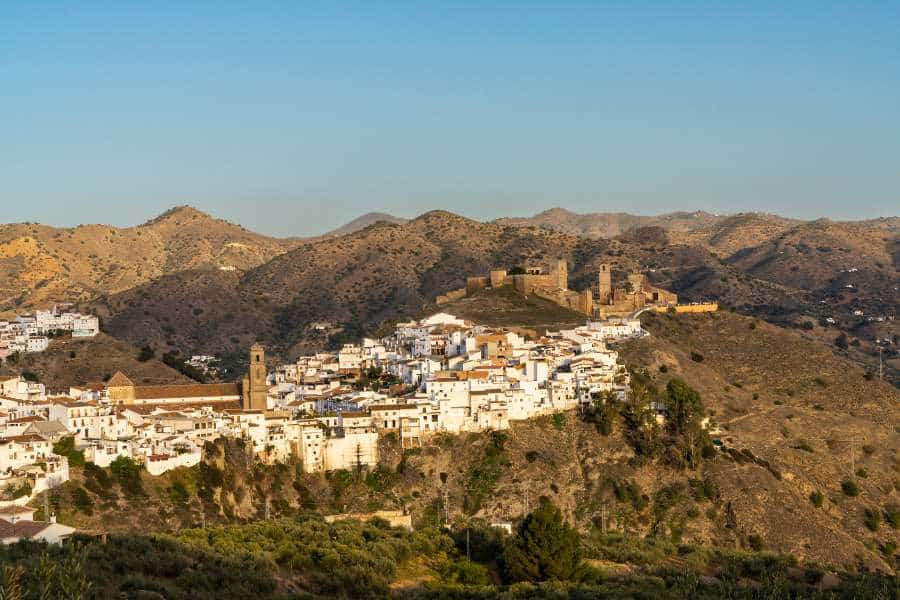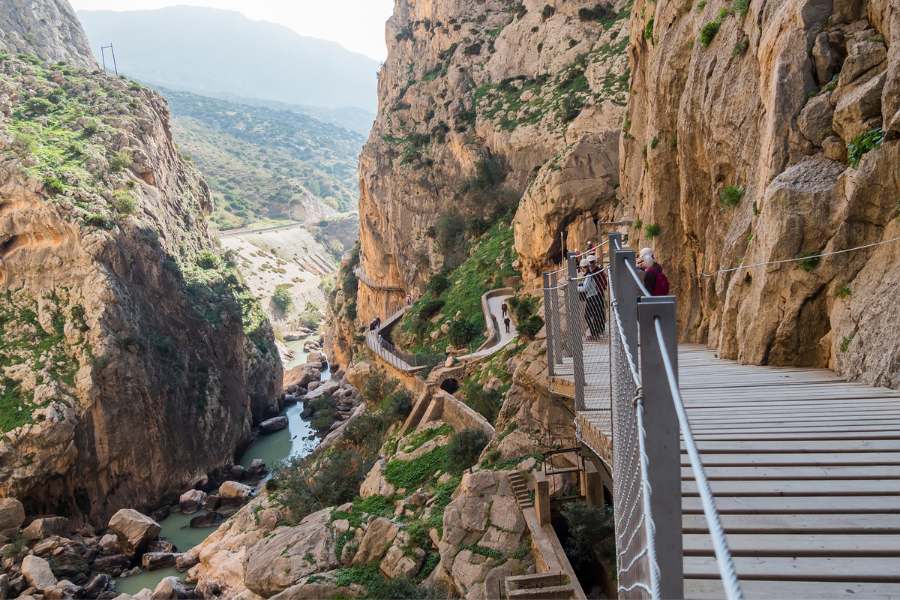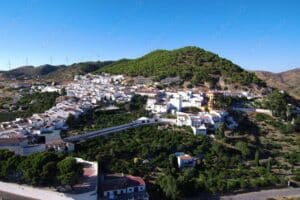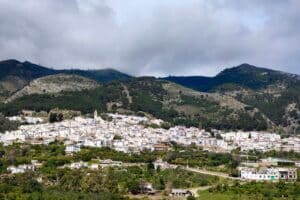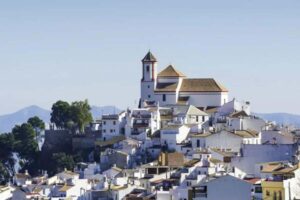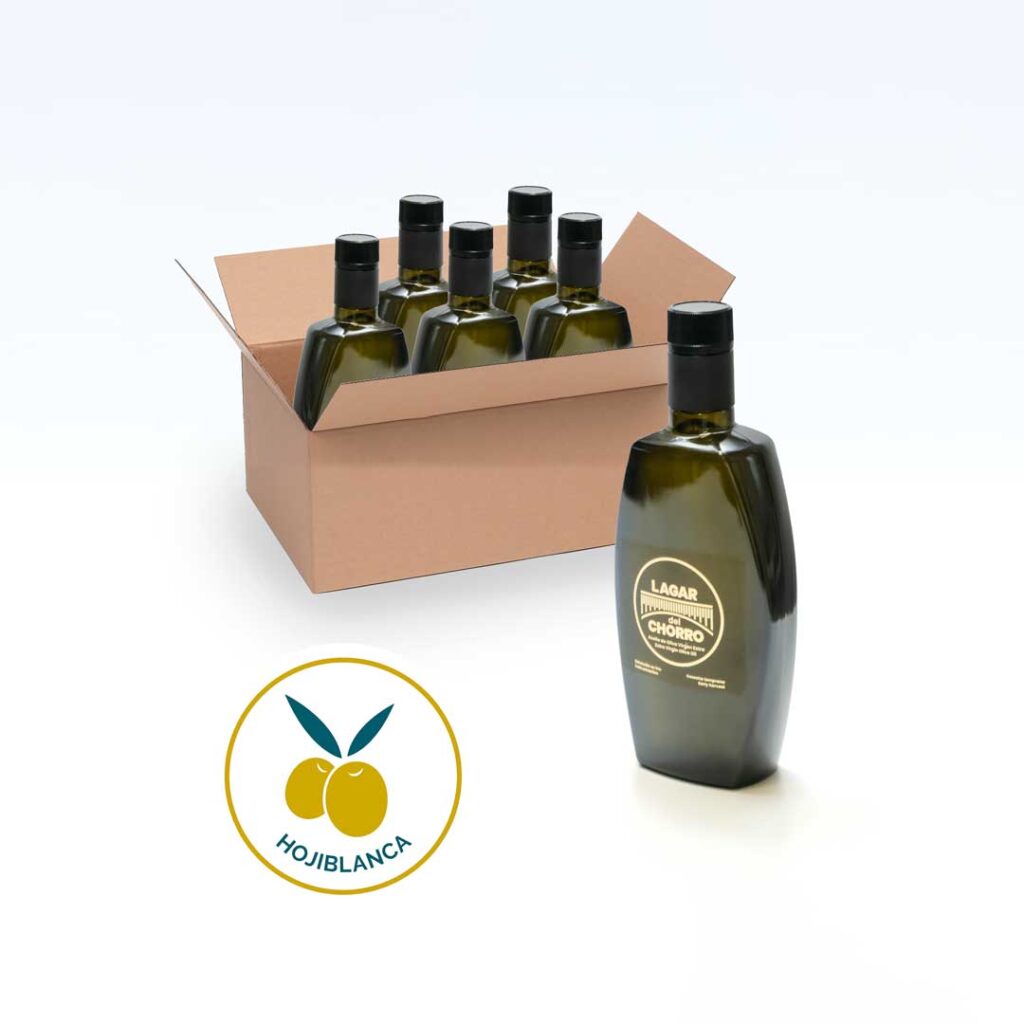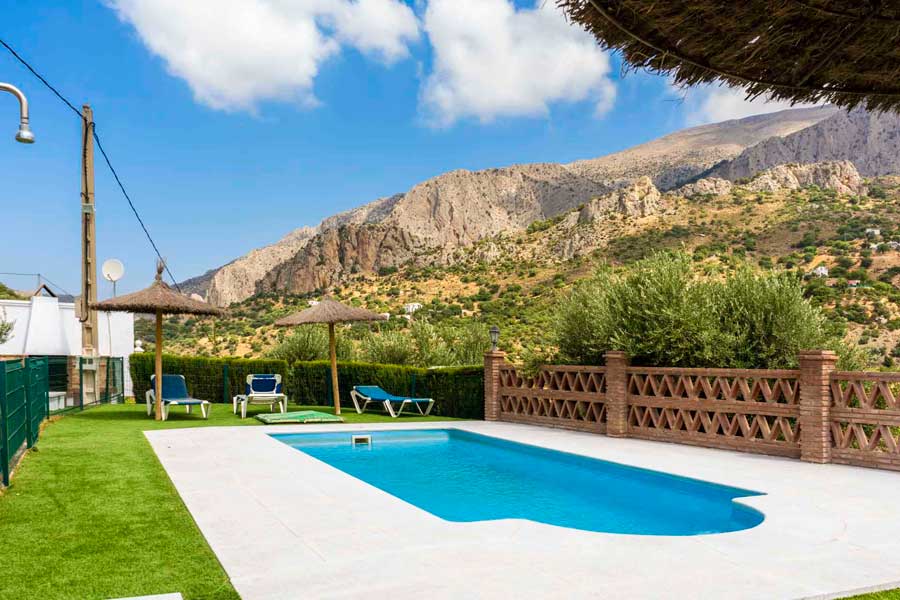At Lagar del Chorro, our commitment to the environment and its treasures is unwavering. Therefore, in this article, we will present you the best options for your visit to Álora, showing you what to see in Álora during your visit to this privileged natural enclave with a history of centuries.
Índice de contenidos
ToggleWhere is Álora and how to get there?
Álora is located in the heart of the province of Málaga, just 40 kilometers from the vibrant capital of the Costa del Sol and in the beautiful Guadalhorce Valley.
The city has excellent road connections, as well as bus and train connections from the capital. In addition, it is surrounded by other charming municipalities such as Ardales, Carratraca, Antequera, Valle de Abdalajís, Cártama, Almogía and Pizarra.
The best thing is that Álora is located less than 12 kilometers from Lagar del Chorro, which makes it a perfect option to enjoy a memorable day while you stay with us.
The story of Álora
The origins of Álora date back to the Neolithic era, a fact supported by the archaeological site of Hoyo del Conde, located just one kilometer from the city.
Since then, this region has been continuously inhabited thanks to its privileged geographical location near the sea and protected by majestic mountains. Álora has witnessed the presence of Tartessians, Phoenicians, Iberians, Visigoths and Arabs throughout its rich history.
These civilizations left their mark on the culture, traditions and buildings of the city, among which the Álora Castle, the Church Tower, the Convent of Nuestra Señora de las Flores, and many other monuments stand out.
What to do in Álora?
Álora offers you a wide range of sports and cultural activities that are difficult to match in the entire Guadalhorce Valley. Therefore, we present 11 activities and places of interest that you cannot miss during your stay in Álora from Lagar del Chorro.
1.- Álora Castle
Located on Cerro de Las Torres, Álora Castle stands on the remains of an ancient hermitage from the Phoenician and Roman era, although its current structure was built under Arab rule during the Middle Ages.
Le château se compose de deux enceintes fortifiées. Celle du bas, de forme irrégulière, s'adapte au terrain et sert de première ligne de défense, tandis que celle du haut a une forme carrée et possède six tours pour une plus grande capacité défensive.
Right next to the Castle is the charming Mirador de Ali Ben Falcum "al Baezi", which offers panoramic views of the entire Álora plain.
2.- Convent of Our Lady of Flowers
This convent, located on the outskirts of the municipality, dates back to the 16th century and was built by the Franciscan Recollects. It has a single nave with a baroque style dressing room that houses the venerated image of the Virgin of Flowers, the patron saint of Álora.
Right in front of the convent is the Cruz del Humilladero, a small building that commemorates the delivery of the keys to Álora by the last Muslim ruler after the reconquest.
3.- Church of Our Lady of the Incarnation
Located in the Plaza Baja de la Despedida, this church is one of the largest in the entire province of Malaga. It was built between 1600 and 1699. The church has a rectangular floor plan with three naves separated by Tuscan columns and semicircular arches. On its ceiling, you can see twelve frescoes from the 18th century that represent the twelve apostles.
Inside, there are several images venerated in the city, such as the Holy Crucified Christ or the Most Holy Mary of Love, as well as a representation of Saint Francis of Assisi in polychrome wood.
4.- Rafael Leri Municipal Museum
This museum shows the history and artistic heritage of Álora, highlighting a series of archaeological pieces that offer a tour of the evolution of the city over time.
But the most notable thing about the museum is the history of its building. Although there are no records to confirm it, it is believed that this building could have been the chapel of the San Sebastián hospital, built by the Catholic Monarchs. In addition, it served as the headquarters of the Priestly Order of the School of Christ.
The price of admission to the museum is €1.50, although for groups of more than 10 people, it is reduced to €1.20.
5.- Monument to Cante por la Malagueña
This allegorical monument celebrates the idealization of flamenco, in particular, the style of singing that was born in Álora. It was erected to honor flamenco art and is one of the most impressive monuments in the city. You can not lose this.
6.- Hermitage of the Three Crosses
Located in the Álora Mountains, on the border between the municipalities of Almogía, Cártama and Álora, this hermitage takes its name because it houses three crosses, one in each nave, that represent these three municipalities, in addition to the neighboring municipality of Pizarra. , during the May crosses.
7.- Ascent to Hacho de Álora
El Hacho es la montaña que protege Álora desde el norte y ofrece impresionantes vistas de la Hoya de Málaga y la propia Álora. Es uno de los tesoros naturales más grandes de la región.
You can start the ascent from the city itself or from the Venta Fuente de la Higuera, which is just 1 km from Álora. The route does not present significant technical or physical difficulties, making it suitable for couples or families. It runs along a path that is partly paved and always climbs gently.
Shortly after starting the climb, you will be able to admire Mount Huma, the Convent of Nuestra Señora de las Flores, Torcal de Antequera and Torrecilla, among other mountain systems and peaks. This experience is truly unique for hiking and nature lovers.
As you return to the path towards El Hacho, you will come across several viewpoints from which you can enjoy even better views thanks to the height gained.
When you see the trig point, you'll be close to the summit! So take your time and enjoy the views. The path continues towards the antenna and narrows until it reaches the Cruz del Hacho, which is the final objective of the trail.
From La Cruz, you will have the best views of Álora, especially on a sunny day.
To return to Álora, simply follow your steps towards the Venta Fuente de la Higuera or take one of the signposted paths from El Hacho that will take you back to the city.
8.- Sierra de Aguas Trail
This trail offers a different experience compared to the climb to Hacho, as it runs through a pine forest between the neighboring town of Carratraca and Álora.
Sur ce sentier, vous pourrez apercevoir des vautours fauves, des faucons pèlerins, des crécerelles, des aigles de Bonelli et des chèvres de montagne, entre autres espèces.
The trail does not present any notable difficulties, but keep in mind that you must walk along the road that connects Carratraca and Ardales, which may have a slightly deteriorated pavement. At approximately kilometer 2.8, you will find an intersection where you can park and begin the route.
9.- The Caminito del Rey
Located in the Desfiladero de los Gaitanes, the Caminito del Rey is located about 12 kilometers from Álora. It is a highly recommended option, since from Lagar del Chorro, you can book your visit and enjoy lunch or dinner (we offer round-trip transportation from our facilities).
The Caminito del Rey is approximately 8 kilometers long and was renovated and opened to the public in 2016. It offers stunning views of the gorge, reaching heights of up to 100 meters above the Guadalhorce River.
If you are a climbing lover, this area is one of the most popular in Andalusia to practice this sport.
10.- Traditional Festivals of Álora
Álora is a city that never rests and offers activities throughout the year. Here is a list of some of the festivities that are celebrated:
- Holy Week: It is one of the most important and devout celebrations in the province of Malaga. Throughout the week, the morning of Good Friday stands out with the "Farewell" ceremony.
- Álora Fair: It is held at the end of July and beginning of August, and the city is filled with activities and celebrations.
- Cante Grande Festival: This event takes place between July and August and is organized by the city's flamenco club.
- Cruces de Mayo: It takes place in the Ermita de las Tres Cruces and has been going on since the 18th century. It includes a Verdiales Festival and the opportunity to taste typical products of the area.
- Perotas Soups Day: It is celebrated on the first Saturday of October in the Plaza de la Despedida. In this event, a bowl of soup is given to each person who visits the square as a way to promote the typical products of Álora.
- Pilgrimage of the Virgin of the Flowers: On September 8, the patron saint's day, the Virgin of the Flowers moves from the Church of the Incarnation to the Convent of the Flowers. The pilgrimage takes place the following Sunday.
- Al-Loárabe Nights: Álora pays tribute to the cultural legacy left by the Arabs on the first weekend of July. The streets of the town are decorated and an Arab market is held in the Plaza de la Despedida.
11.- Walk through its streets
Álora is a city of white houses, winding and narrow streets, making it an ideal place to explore on foot. Most of the activities mentioned above can be enjoyed while wandering through its charming streets.
To guide you a little, here we present some of the streets and squares that you should visit in Álora:
- Ancha
- Carril
- Barranco
- Atrás
- Cantarranas
- Plaza Fuente Arriba
- Plaza de la Despedida
Weather forecast in Alora
Álora, like other cities and towns that we present in our blog, is very close to Lagar del Chorro and offers a wide variety of cultural, gastronomic and sports experiences that will complement your stay in our facilities.



